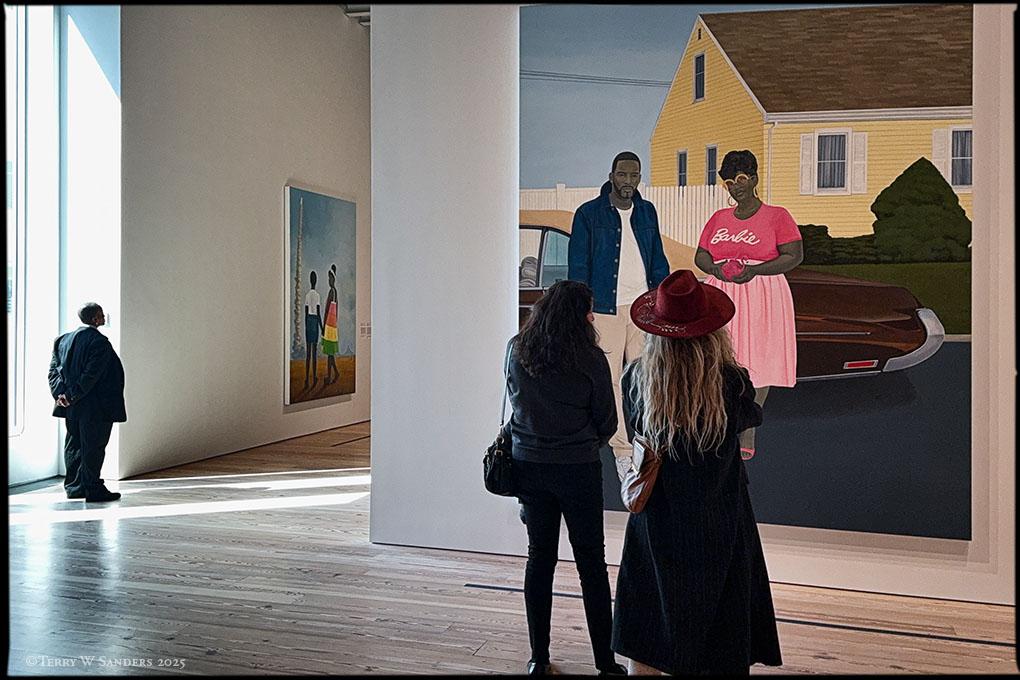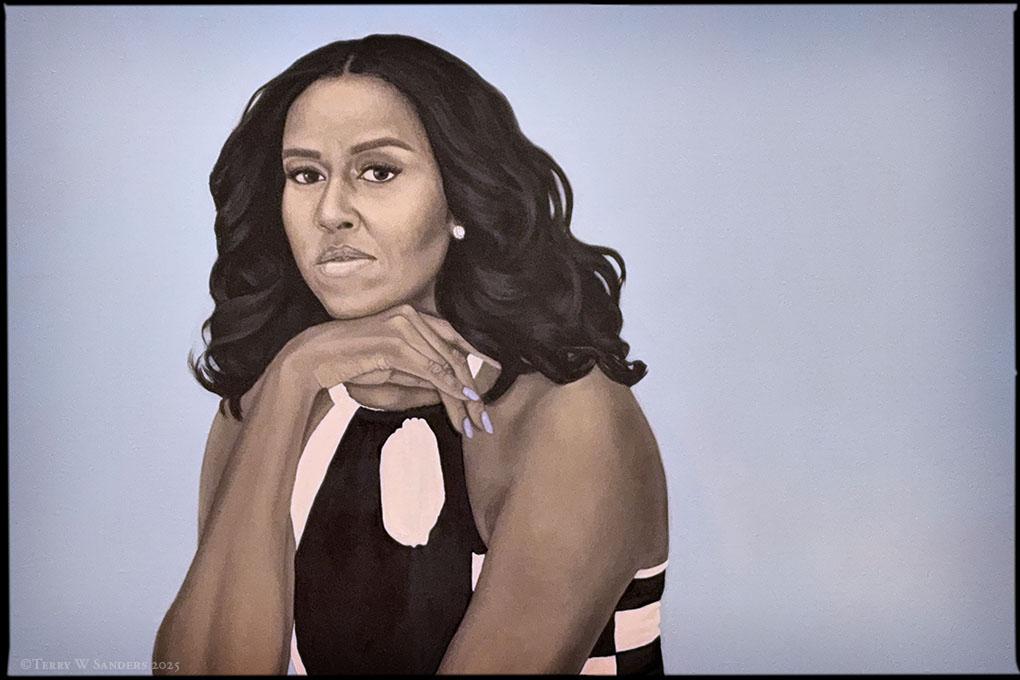About five minutes into Amy Sherald: American Sublime, the Whitney Museum’s first New York solo exhibition of Amy Sherald, visitors come face-to-face with the portraits that cemented her status in contemporary art: Michelle Obama and Breonna Taylor, the young Black woman fatally shot by police in Louisville, Kentucky, in March 2020. Museumgoers pause instinctively, drawn in by the quiet power radiating from each canvas. But this is no conventional retrospective—it’s a subtle revolution, a retelling of American identity through poised gestures, striking textiles, and individuals long left out of the country’s artistic canon.

Sherald, born in Georgia and now based in New York, reshapes the tradition of American portraiture not with protest, but with tenderness and intimacy. Her subjects are everyday people: a young man in Bermuda shorts, a woman gently placing a flower in her hair, a mother cradling her child. These figures are stripped of spectacle and rhetoric, yet they resonate deeply, placing the ordinary at the center of the canvas.
Her work is rooted in American realism—evoking figures like Edward Hopper and Andrew Wyeth—but veers in a distinctly different direction. Sherald presents fresh archetypes: the Black cowboy, the Black beauty queen, the Black farmer. Each painting begins with a photograph, yet what emerges on canvas is a meticulous, poetic reinvention. Clothing, postures, and objects are never incidental; they are carefully chosen symbols, integral to the story each subject embodies.

Sherald selects her sitters based on what she describes as a “spark”—an ineffable quality that draws her in. During her photo sessions, she allows them to move naturally, finding their own expressions and stances. She renders their skin in muted, grayscale tones—not to obscure identity, but to ensure the viewer’s gaze does not fixate on race alone. The titles of her paintings often echo the words of Black literary figures like Toni Morrison and Lucille Clifton—never direct citations, but subtle reverberations of their voices, adding layers of meaning to each canvas without the need for further explanation.












